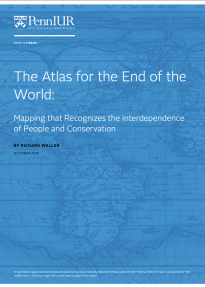Key Message
The Atlas for the End of the World underscores the urgent need to address the global tension between food production and biodiversity conservation. It reveals that many biodiversity hotspots are under threat from urban expansion and insufficient protection measures. The atlas calls for a paradigm shift in conservation efforts, emphasizing the integration of human and environmental considerations. By mapping these critical areas and their challenges, the atlas aims to inform and inspire policies that promote sustainable development, ensuring that both nature and humanity can thrive together. The project advocates for a collaborative approach involving local communities, policymakers, and conservationists to design and implement effective strategies that balance ecological preservation with socio-economic development


